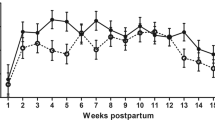Abstract
Pregnancy toxemia is a severe problem in sheep in the transition period, which is most likely related to feeding. There is a need to seek alternatives to this problem, and the homeopathic industry has invested in products for this purpose. The product (Figotonus®) tested in this work was added to the diet of dairy sheep at different dosages (1, 5, and 10 g/day/animal) to verify the effects on animal health indicators, focusing mainly on the reduction of cases of ketosis. In all, 32 Lacaune ewes were used, with confirmed pregnancy presenting two to six births during their lifetime. The following blood biochemical indicators—total proteins (PT), albumin (ALB), triglycerides (TG), cholesterol (COL), alanine aminotransferase (ALT), gamma glutamyl transferase (GGT), and ß-ketone—were measured. The volume of milk produced was measured, as well as the milk composition (protein, fat, lactose, fat-free dry matter, density, total solids, and minerals). As a result, we found significant differences in the ß-ketone, ALT, and GGT in day 3 prepartum and day 3 postpartum. We highlight the lower ß-ketone levels in the homeopathic-treated animals, as well as reduced ALT and GGT enzyme activity in the treated sheep. Milk production did not differ between groups, nor did milk composition, except for mineral levels in milk (higher levels in treated animals). The commercial product tested had a beneficial effect on health indicators of dairy sheep in the transition period, preventing ketone bodies to increase in the sheep.



Similar content being viewed by others
References
Bellavite P (2003) Complexity science and homeopathy: a synthetic overview. Homeopathy 92:203–212
de Bianchi LPM, Antunes LMG (1999) Radicais livres e os principais antioxidantes da dieta. Rev Nutr 12:123–130
Brito MA, González FD, Ribeiro LA, Campos R, Lacerda L, Barbosa PR, Bergamnn G (2006) Composição do sangue e do leite em ovinos leiteiros do sul do Brasil: variações na gestação e na lactação. Cienc Rur 36:942–948
Da Costa Filho LCC, Queiroz VLD, de Souza MFDA, Zúccari CESN, da Costa EV (2015) Homeopatia aplicada à reprodução animal. Arquivos de Ciências Veterinárias e Zoologia da UNIPAR 17:63–68
De Oliveira FJ, Oliveira AM, Pereira RA, Martins CF, Del Pino FAB, Ferreira MB, Corrêa MN (2016) Protocolo de indução de cetose subclínica e seu efeito sobre parâmetros bioquímicos em ovelhas gestantes. Science and Animal Health 4:21–34
Do Nascimento PM, Morgado AA, Nunes GR, Nikolaus JP, Weigel RA, Lima AS, Sucupira MCA (2015) Metabolismo oxidativo e perfil bioquímico de ovelhas santa inês no período periparto: efeito da suplementação parenteral com vitamina E. Semin: Ciênc Agrár 36:1397–1408
Ferreira MI, Borges I, Macedo Junior GL, Rodriguez NM, Penna CFA, Souza MR, Cavalcanti LF (2011) Produção e composição do leite de ovelhas Santa Inês e mestiças Lacaune e Santa Inês e desenvolvimento de seus cordeiros. Arq Bras Med Vet Zootec 63:530–533
França BK, Alves MRM, Souto FMS, Tiziane L, Boaventura RF, Guimarães A, Alves A (2013) Peroxidação lipídica e obesidade: Métodos para aferição do estresse oxidativo em obesos. Port J Gastroenterol 20:199–206
Gebhardt R (2003) Antioxidative, antiproliferative and biochemical effects in HepG2 cells of a homeopathic remedy and its constituent plant tinctures tested separately or in combination. Arzneimittelforschung 53:823–830
Gülçin Ý, Elias R, Gepdiremen A, Boyer L, Köksal E (2007) A comparative study on the antioxidant activity of fringe tree (Chionanthus virginicus L.) extracts. Afr J Biotechnol 6:410–418
Haddad Y, Vallerand D, Brault A, Haddad PS (2011) Antioxidant and hepatoprotective effects of Silibinin in a rat model of nonalcoholic steatohepatitis. J. Evid Based Complementary Altern Med 2011:1–10
Linzmeier LG, Avanza MFB (2009) Toxemia da prenhez. Rev Cient Eletrônica Med Vet 12:1–6
Nadova S, Miadokova E, Alfoldiova L, Kopaskova M, Hasplova K, Hudecova A, Cipak L (2008) Potential antioxidant activity, cytotoxic and apoptosis-inducing effects of Chelidonium majus L. extract on leukemia cells. Neuro Endocrinol Lett 29:649
Nantes JH, Santos TABD (2008) Cetose-Revisão de literatura. Rev Cient Eletrônica Med Vet 6:1–6
Nelson DL, Cox MM (2002) Lehninger princípios de bioquímica. Lehninger princípios de bioquímica. Artmed, São Paulo
Real CM (2008) Homeopatia populacional: Fundamentos Ruptura de um Paradigma. A Hora Veterinária 164:13–20
Sá COD, Siqueira ERD, Sá JLD, Fernandes S (2005) Influência do fotoperíodo no consumo alimentar, produção e composição do leite de ovelhas Bergamácia. Pesqu Agropec Bras 40:601–608
Silva BJ, Seca AM, Barreto MDC, Pinto DC (2015) Recent breakthroughs in the antioxidant and anti-inflammatory effects of Morella and Myrica species. Int J Mol Sci 16:17160–17180
Silva NCD, Bonfá HC, Borges I (2011) Cetose em pequenos ruminantes. Nutritime: revista eletrônica 8:1647–1657
Souto RJ, Afonso JAB, Mendonça CL, Carvalho CC, Silva Filho AP, Cajueiro JF, Soares PC (2013) Achados bioquímicos, eletrolíticos e hormonais de cabras acometidas com toxemia da prenhez. Pesqu Vet Bras 33:1174–1182
Teixeira MZ, Guedes CH, Barreto PV, Martins MA (2010) The placebo effect and homeopathy. Homeopathy 99:119–129
Toma HS, Chiacchio SB, Monteiro CD (2010) Aspectos clínicos, laboratoriais, necroscópicos e métodos diagnósticos da toxemia da gestação em pequenos ruminantes. Rev Cient Eletrônica Med Vet 8:1–17
Author information
Authors and Affiliations
Corresponding author
Ethics declarations
Experimental protocol was approved by the Animal Welfare Committee of the State University of Santa Catarina (UDESC) under number 4318050916.
Conflict of interest
The authors declare that they have no conflict of interest.
Rights and permissions
About this article
Cite this article
Custódio, E., Baldissera, M.D., Machado, G. et al. Use of homeopathic product to prevent ketosis in the dairy sheep during the transition period. Comp Clin Pathol 26, 535–541 (2017). https://doi.org/10.1007/s00580-017-2414-6
Received:
Accepted:
Published:
Issue Date:
DOI: https://doi.org/10.1007/s00580-017-2414-6




